Antonio Rüdiger, a renowned German footballer known for his defensive prowess, has adopted a rather unconventional training method: tying an umbrella behind his back. This unique technique has sparked considerable curiosity and discussion within the sports community, as it represents a departure from traditional training methods. By exploring the reasons behind this unusual practice, we can gain insight into its potential benefits for speed and endurance.

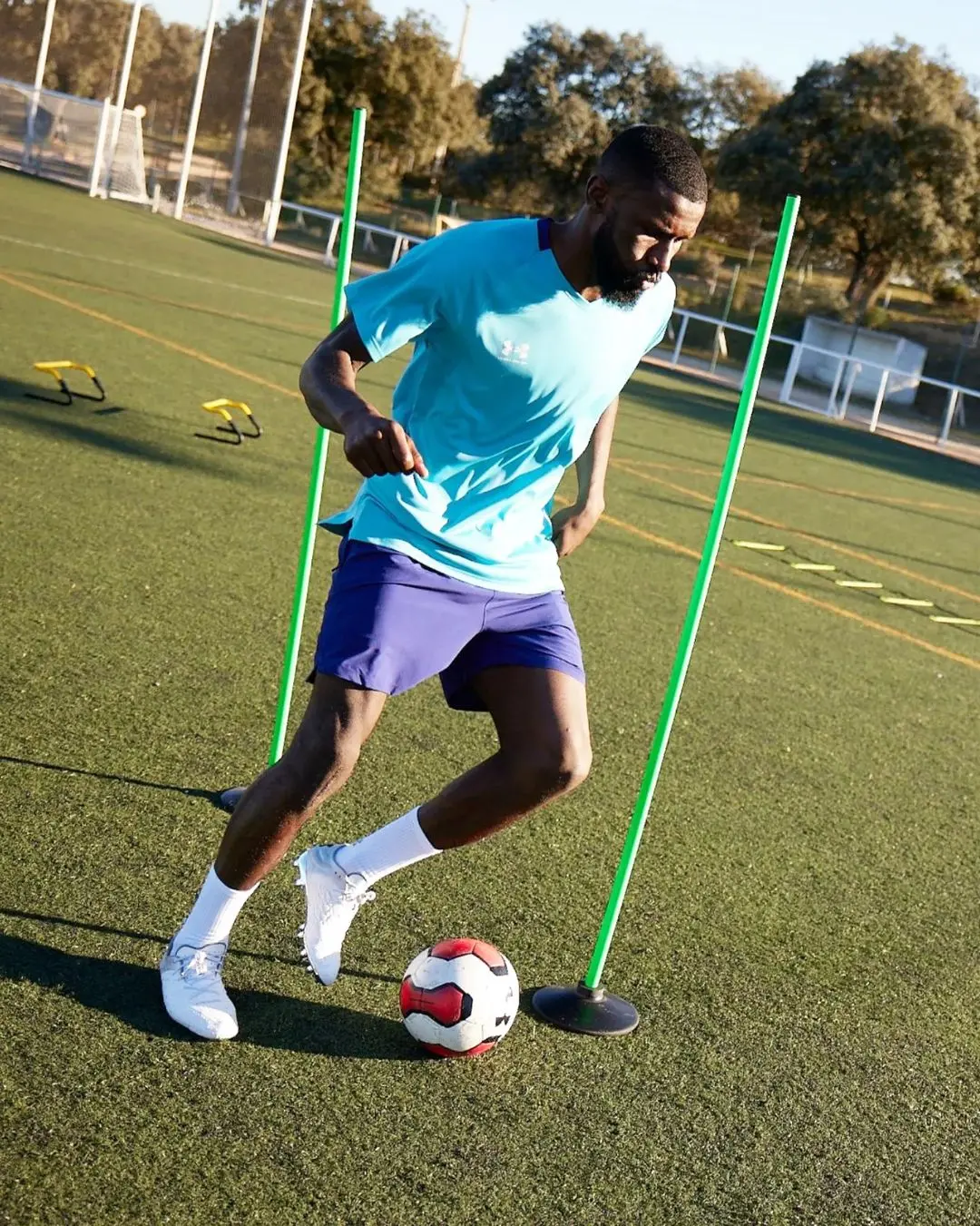
Rüdiger’s method involves securing an umbrella to his back, creating a drag effect as he moves. This additional resistance challenges his body to work harder during training sessions, effectively simulating the conditions of running against the wind. By doing so, Rüdiger aims to enhance his speed and endurance, crucial attributes for a footballer who often finds himself in high-stakes, fast-paced situations on the field.
The concept behind this training method is rooted in the principles of resistance training, a widely recognized approach in athletic conditioning. Resistance training typically involves using weights or other forms of resistance to increase muscle strength and endurance. In Rüdiger’s case, the umbrella serves as an innovative tool to create resistance without the need for traditional gym equipment. This approach not only adds variety to his training regimen but also allows for a more dynamic and sport-specific workout.
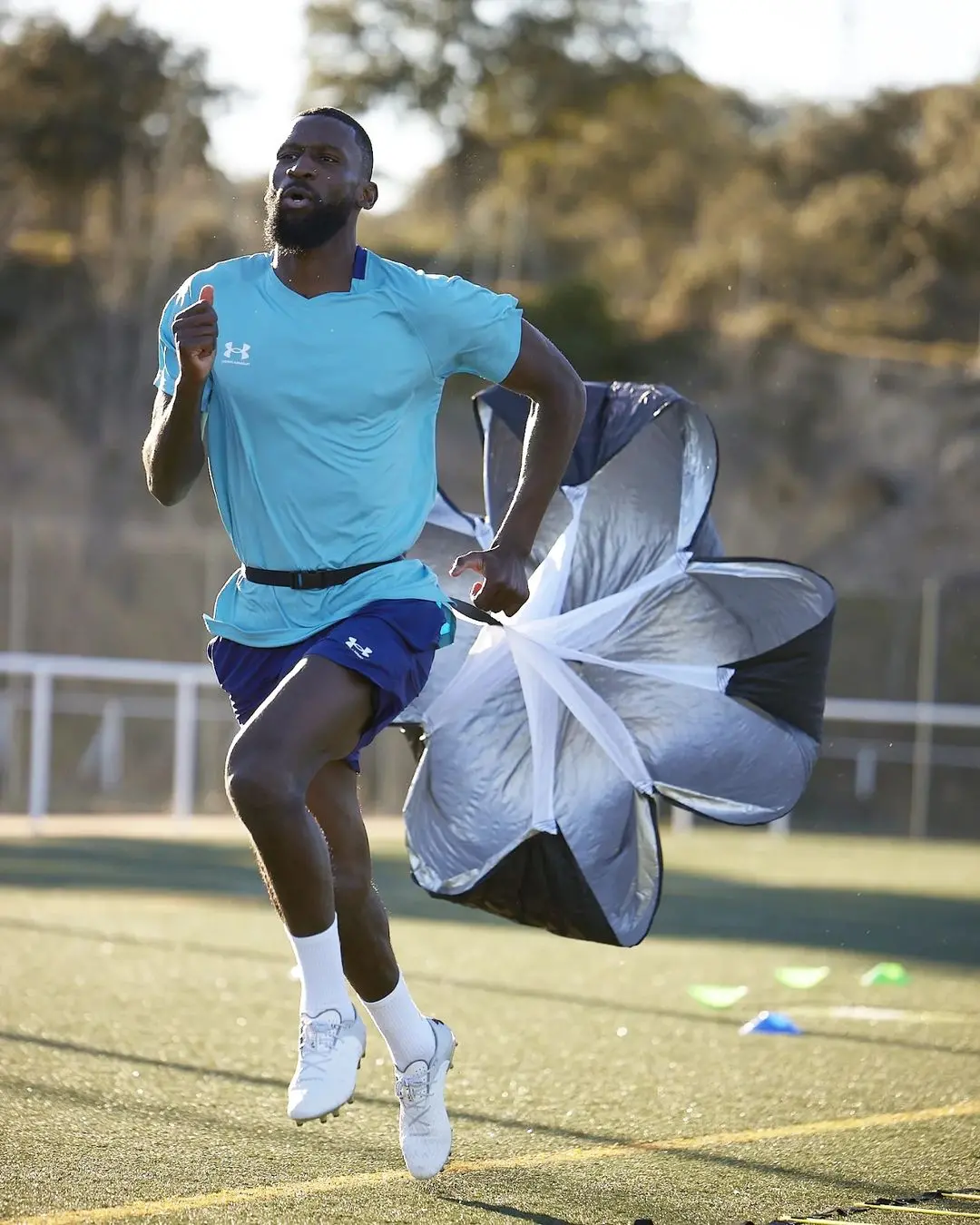
One of the primary benefits of Rüdiger’s umbrella training is its potential to improve his sprinting ability. Speed is a critical component of a defender’s skill set, enabling quick responses to opponents’ movements and the ability to cover large distances rapidly. The resistance created by the umbrella forces Rüdiger to exert more effort with each stride, thereby strengthening the muscles involved in sprinting. Over time, this increased muscle strength translates to faster sprinting speeds when the resistance is removed.
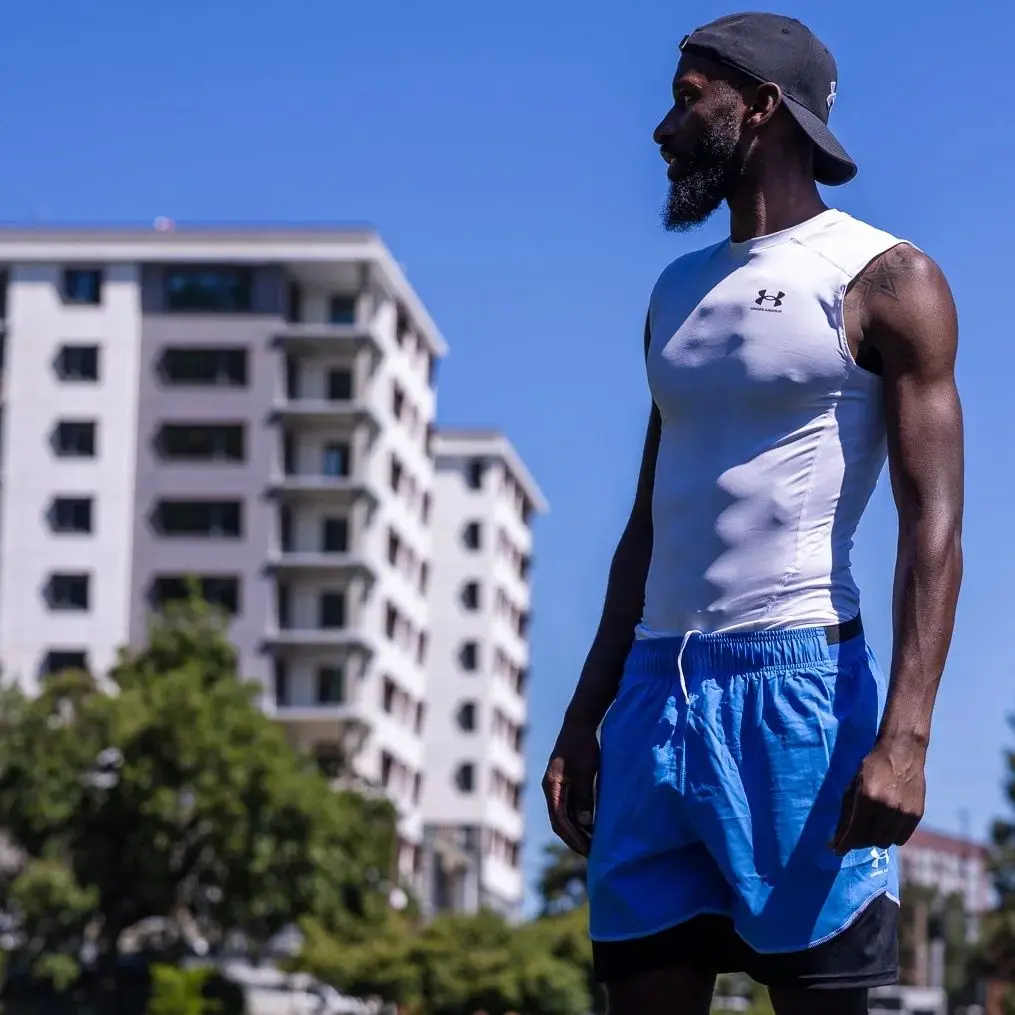
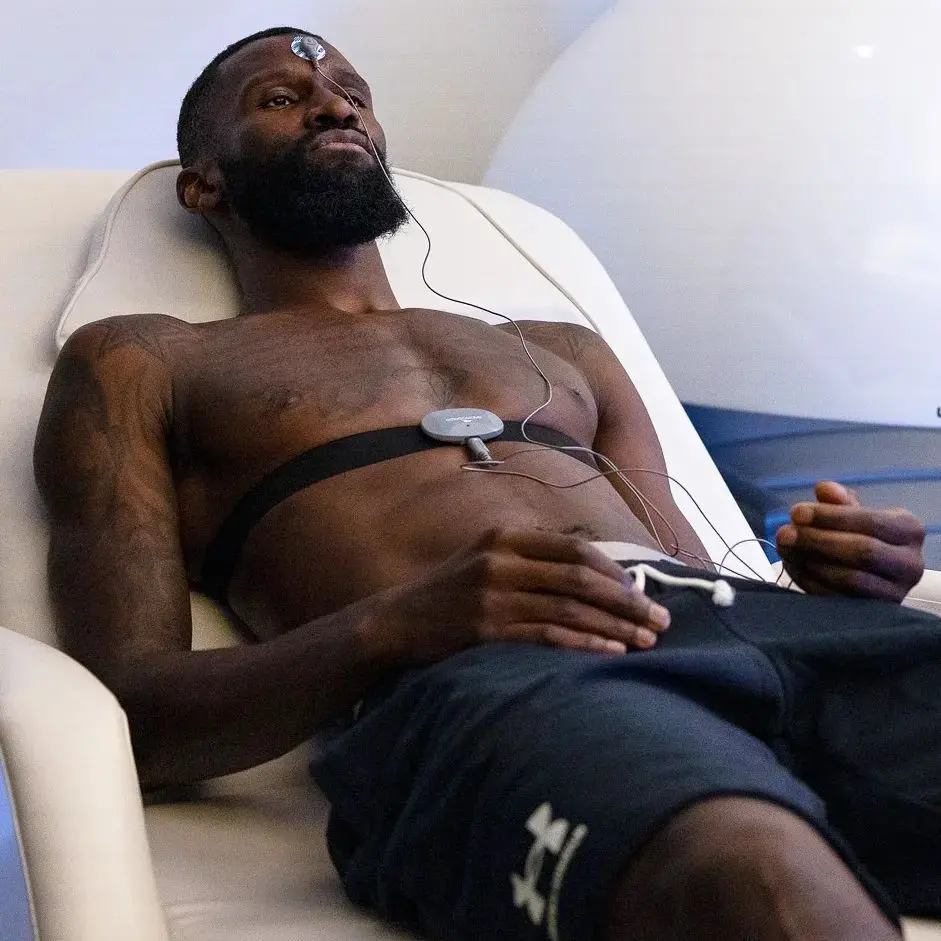
Additionally, the endurance aspect of this training method cannot be overlooked. Football matches often require players to maintain high levels of performance for extended periods. By incorporating resistance into his running drills, Rüdiger is effectively pushing his cardiovascular system to adapt to more strenuous conditions. This can lead to improved stamina, allowing him to sustain high-intensity efforts throughout the entirety of a match.
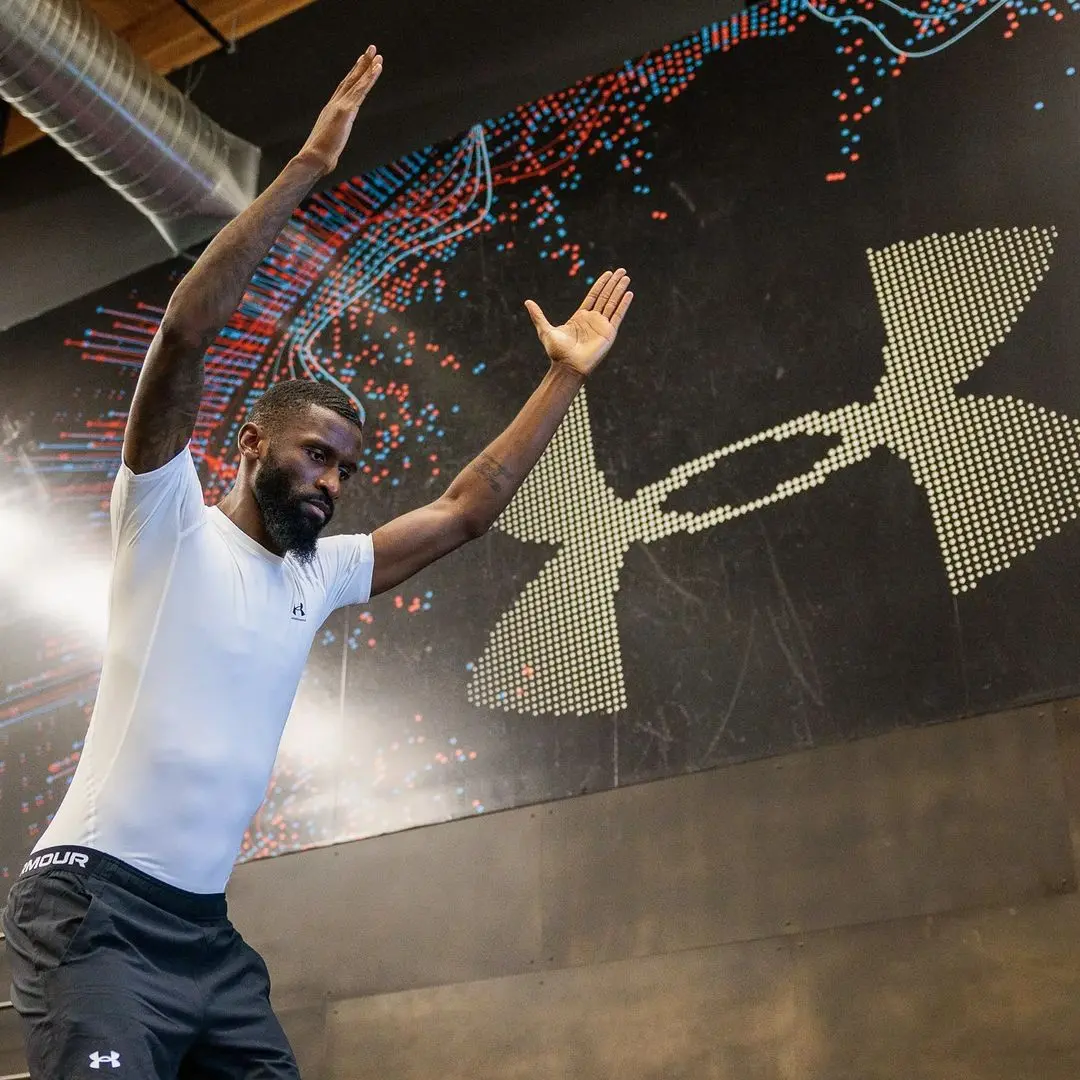
Moreover, this unconventional training method highlights Rüdiger’s commitment to innovation and continuous improvement. In a highly competitive sport like football, where marginal gains can make a significant difference, exploring novel training techniques can provide a competitive edge. Rüdiger’s willingness to experiment with unique methods demonstrates his dedication to staying at the top of his game and continuously pushing his physical limits.
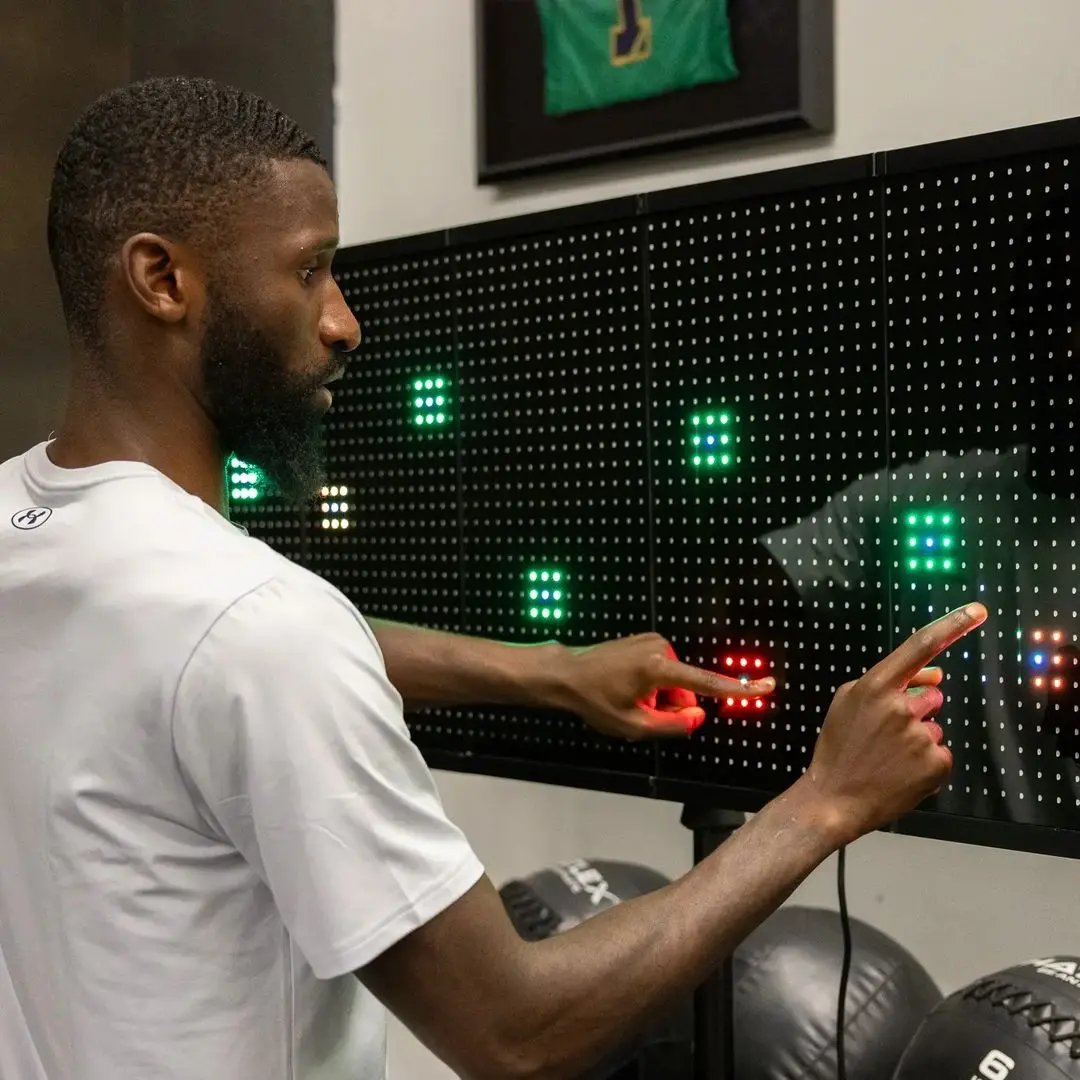
While the sight of a professional footballer running with an umbrella strapped to his back might seem odd to some, it underscores the importance of creativity and adaptability in athletic training. Rüdiger’s approach serves as a reminder that there is no one-size-fits-all solution in sports conditioning. Athletes must be willing to step outside their comfort zones and embrace innovative methods to achieve their full potential.
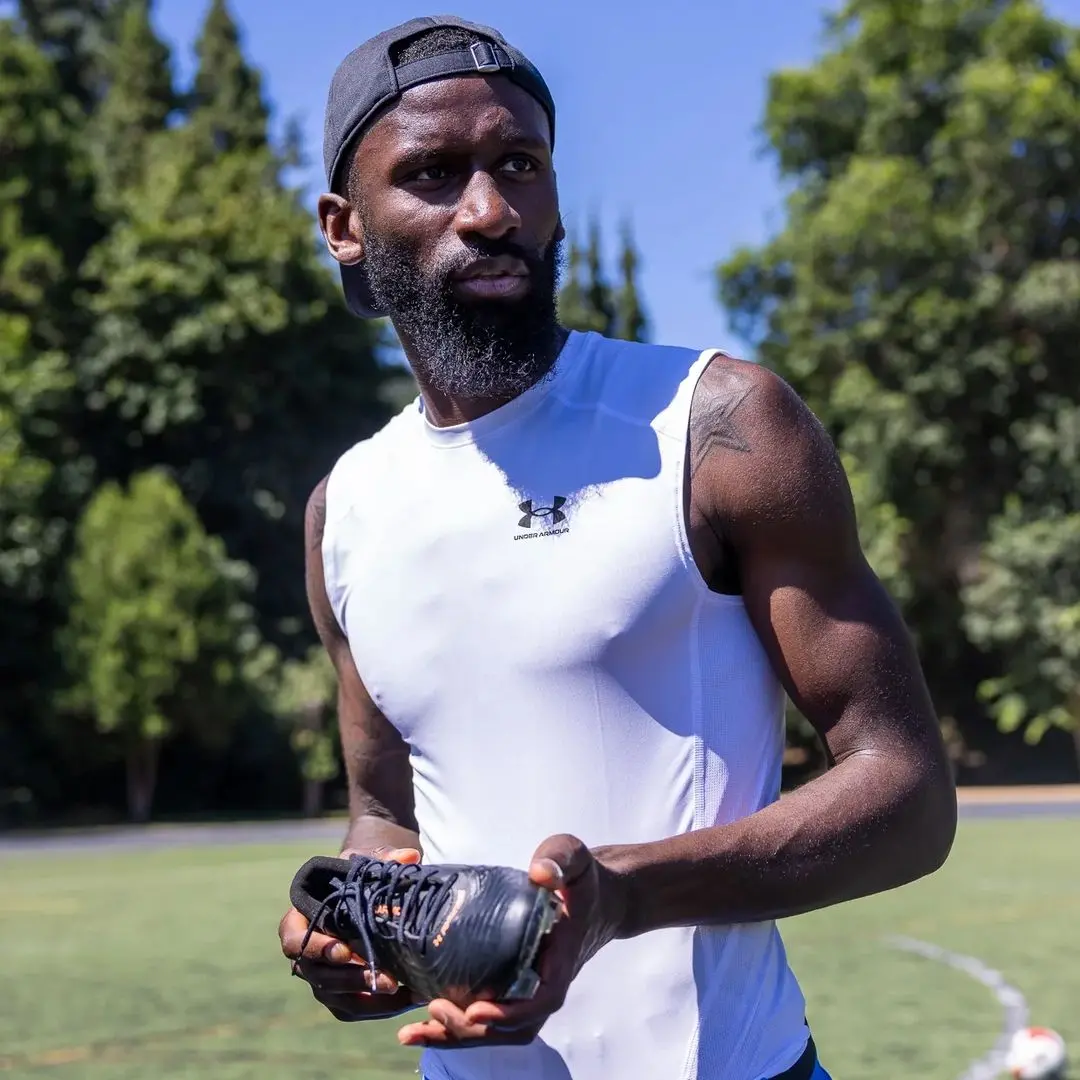
In conclusion, Antonio Rüdiger’s use of an umbrella in his training regimen is a testament to his dedication to enhancing his speed and endurance. This unconventional method leverages the principles of resistance training to provide a unique and effective workout. By challenging his body in new ways, Rüdiger not only aims to improve his on-field performance but also sets an example for other athletes to think creatively about their training routines. Whether or not this method becomes widely adopted, it undoubtedly reflects Rüdiger’s commitment to excellence and his relentless pursuit of athletic improvement.